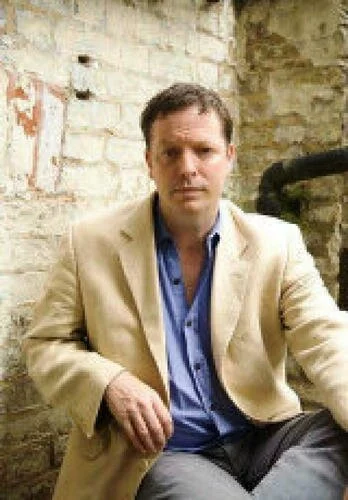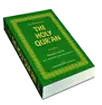 It started “in the far reaches of the Internet and the mutterings of the political right, then in increasingly mainstream and mass-market venues” and has since entered “the central corridors of European and American politics.”
It started “in the far reaches of the Internet and the mutterings of the political right, then in increasingly mainstream and mass-market venues” and has since entered “the central corridors of European and American politics.”
So writes Doug Saunders in The Myth of the Muslim Tide (Alfred Knopf Canada), to be released next week. He is the European bureau chief of the Globe and Mail, and author of the much-acclaimed Arrival City (about the sprawling slums of Mumbai, Rio, London, Paris, Chongqing, Los Angeles, etc. — the first stop in the mass migration of millions from rural to urban areas).
Saunders was living in the U.S. during the Sept. 11 attacks and in London during the July 7, 2005, subway bombing. He has reported extensively on the war on terror and on Islamophobia in Europe.
There, conspiracy theories about an Arab/Muslim takeover of the continent — “Eurabia” — helped propel far-right political parties to prominence.
In the U.S., anti-Muslim bigotry has reached such alarming levels that four of the leading Republican presidential candidates went mostly unchallenged as they spread patently false notions about Muslims and Islam, often at the behest of their rich Islamophobic funders.
Saunders tackles and counters several myths:• Muslims are breeding like rats.
In 2010, the Muslim population of the European Union plus non-members Switzerland and Norway was 18.2 million, or 4.5 per cent. By 2030, it would be 29.8 million — 7.1 per cent. By 2050, it would reach 10 per cent. That’s according to three authoritative studies.
In 2010, the American Muslim population was estimated at 2.6 million. By 2030, it would be 6.2 million, or 1.7 per cent — as numerous as Jews and Episcopalians.
But facts don’t seem to matter. A YouTube video “Muslim Demographics” has been watched by 13 million people, even though “every one of its claims is untrue.”
• Islamic belief equals high birth rates.
“There is no tie between Islamic beliefs and fertility rates,” even if five of the 10 most fertile countries are Muslim-majority nations.
“Muslim countries are undergoing one of the fastest rates of fertility decline in history . . . and are converging with those of Europe.”
Iranian average family size has fallen to 1.7 children, a lower rate than in Britain or France. Indonesia’s is down to 2.19, Turkey’s to 2.15, Tunisia’s to 2.04, the UAE’s to 1.9, Lebanon’s to 1.86, and Bosnian Muslims’ to 1.23. • A majority of immigrants are and will be Muslims.
“If the West is being overwhelmed at all, it is not by Muslims.”
Spain, close to the Arab world, gets a majority of its immigrants from Romania or from the other side of the Atlantic. In Britain, only 28 per cent of immigrants are Muslim. “If a religious group is taking over in the U.K., it is Catholics.” In Germany, fewer than 15 per cent of immigrants are Muslim. A far larger group comes from Eastern Europe.
Only in France are Muslims the largest immigrant group, mainly because many were French citizens a generation ago, when Algeria and Tunisia were French territories.
Belgium, Netherlands and Scandinavia are attracting waves of Poles, Romanians and Russians.
• Muslim immigrants live apart and in ghettoes.
Some impoverished ones do, especially in Europe. But that’s a function of economics. They are paying “an ethnic and a religious penalty in the labour market,” according to a study of 11 European cities by the Open Society Institute.
Their case is no different than that of those from, say, the Caribbean (mostly Christian) or Suriname (mainly Christians and Hindus).
In Canada, too, studies show that “skin colour, not religion, affected the ability to integrate and that Muslims are no less (and sometimes slightly more) able to integrate economically and socially than other people of the same race.”
Measured by rates of employment, home ownership and naturalization, one study shows the “assimilation index” of Canadian Muslims as “the highest — 77 out of a possible 100. The U.S. came close with a score in the 60s but Muslims in Europe lagged far behind.”
Muslims are not loyal to host countries.
On the contrary, Muslims are more committed. Polls show that British and French Muslims, for example, express stronger attachment to Britain and France than other citizens.
• Muslim immigrants are angry.
In fact, Muslims are among the least disenchanted and most satisfied people in the West, according to several polls.
• Muslim immigrants want to impose sharia.
Rather, it is a majority of American Christians who want laws to be based on the Ten Commandments. The few Muslims who do use sharia, especially in Britain and the U.S., do so for religious arbitration in personal and business matters, just as Christians and Jews do.
• Islam breeds terrorism.
In fact, terrorists tend to be non-faithful individuals (many using drugs, alcohol and prostitutes), who are drawn to radical peer groups for political or personal but not religious reasons, according to the British intelligence agency M15. Very few have been raised in religious households.
There is indeed evidence that a well-established religious identity actually protects against violent radicalization.
In summing up, Saunders says that these and other claims are “demonstrably untrue. The Muslim-tide hypothesis on the whole has no merit . . . The idea of a stealth takeover by Islamic believers is a delusion.”
What’s being said about Muslims is what was once said about Catholics and Jews in the 19th and early part of the 20th century. Both groups were also accused of being religiously motivated aliens incapable of integration and hell-bent on changing society.
“We have forgotten how alarming the waves of Roman Catholic and Jewish immigrants from the fringes of Europe appeared to North Americans and Western Europeans only a few decades ago.
“Their home countries seemed less democratic, less economically free, and more prone to religious law and political extremism. Right up through the early 1950s, it was commonplace for thinkers across the political spectrum to argue that Catholic immigrants were driven by the dictates of their faith to promote fascism, violence and religious extremism, and therefore could not be assimilated into non-Catholic cultures.
“By the end of the 20th century, though, most people had forgotten about their earlier fears of religious minorities . . .
“Muslim immigrants are no more ‘different’ and no more threatening than earlier larger waves of religious minorities who contribute to the current populations of most Western countries.”
Yet we cannot be complacent. The stakes are high. The Muslim-tide beliefs have already become the founding myth behind several alarming political movements and the cause of one notable act of terrorism” — perhaps two, Norway’s Anders Breivik last year and American Wade Michael Page this month, who may have mistaken Sikhs for Muslims.
SOURCE: thestar.com



















